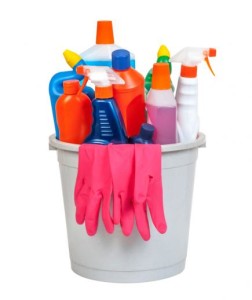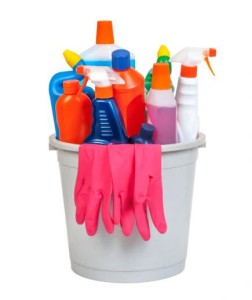 Did You Know?
Did You Know?
- Over 90% of poison exposures happen at home with household products.
- Common chlorine bleach is the #1 household chemical involved in poisoning.
- Organic pollutants, found in many common cleaners and even air fresheners, have levels 2 to 5 times higher inside your home than out.
- Common cleaners give off fumes that can potentially increase the risk of kids developing asthma, the most common chronic childhood disease.
- A person who spends 15 minutes cleaning soap scum off shower walls could inhale 3 times the ‘acute one-hour exposure limit’ for glycol ether-containing products.
- 1 in 7 primary school-aged children has asthma. Rates in children under five have increased more than 160% from 1980-1994.
- Animal poisoning exposure cases totalled over 131,000 in 2005 with dogs accounting for 89% of the cases.
- If your home is anything like the average home, you generate more than 10 kilos of household hazardous waste each year (the EPA designates toilet cleaners, tub and tile cleaners, oven cleaners, and bleach as hazardous waste).
Do you have toxic waste in your home?
Some food for thought – There are over 75,000 chemicals registered with the EPA and less than 20% of them have been tested for toxicity.
Toxic ingredients you should know
- Sodium Hydroxide: Causes 75% of all caustic injury to the oesophagus of kids under 5 years old; can cause burns in tissues, chronic skin irritation; irritation to the respiratory tract; liver & kidney damage.
- Hydrochloric Acid: Can cause severe damage to skin and eyes; throat irritation even when exposed briefly and at low levels; linked to reactive airways dysfunction syndrome (sounds like asthma to me). Found in – Lysol Toilet Bowl Cleaner; Lime-A-Way Bowl Cleaner; Febreeze Laundry Odour Eliminator.
Both of these ingredients are found in many commonly used household cleaning products, so please check the ingredients list of all the products that you’re using and consider making a change for your health.
Have you ever wondered what people used to clean their house before so many different kinds of cleaning products were so readily available on the market? Many of these ideas are not new and have been around for a long time.
I have made every attempt to only include instructions that include easy to find, relatively inexpensive ingredients. Please use a little caution and a lot of common sense when trying these preparations out:
- Instead of buying expensive antibacterial sprays for the kitchen, just put about 1 tablespoon of household bleach in a spray bottle filled with water and use it to disinfect around the sink and counters, especially when you’ve been handling or packaging meat.
- When your drain is clogged with grease, try pouring a cup of salt and a cup of baking soda down the drain followed by a generous amount of boiling water. This will usually dissolve the grease and clear the drain.
- Use a cloth moistened with rubbing alcohol, soda water, or white vinegar to give your stainless steel a brilliant shine.
- Soda water makes a good instant spot remover. Pour a little on the stain, let it set for a second or two, and blot with a damp sponge.
- A mixture of 1/2 cup mild dishwashing liquid and 2 cups boiling water makes a great spot remover for carpets. Apply with a damp sponge.
- Black marks left on your floors from the heels of your shoes can be removed with a pencil eraser.
- Water rings or spots can be removed from wood furniture with a mixture of toothpaste and baking soda applied with a damp cloth.
- To clean all types of wood work, make a mixture of 2 tablespoons vegetable oil, 4 tablespoons white vinegar, and 1 litre warm water. Apply with a soft cloth and dry with a separate, clean cloth.
- To clean the stubborn stains in your bathtub, make a paste of hydrogen peroxide and cream of tartar. Use an old toothbrush to rub it into the stains and rinse thoroughly.

